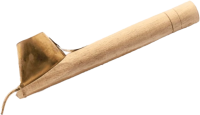
Kain in Indonesia isn’t just fabric; it’s a living masterpiece, a storyteller, and a bearer of culture. Each piece, whether worn, draped, or displayed, is steeped in meaning, embodying the identity of its origin. From the intricate patterns of batik in Java to the bold, geometric designs of ikat in East Nusa Tenggara, every kain is a tribute to the artisans who craft it and the communities it represents.
A Kaleidoscope of Tradition: The Meaning of Kain in Indonesian Life
For Indonesians, kain isn’t merely a garment—it’s a way of life. It wraps around milestones, from birth to marriage to final farewells. Kain batik, for example, is often used in ceremonies to signify blessings and protection, with specific patterns chosen to reflect values like harmony, fertility, or resilience.
Every motif holds a narrative. Take the Mega Mendung pattern from Cirebon, with its cloud-like designs symbolizing patience and calmness. Or the Songket of Sumatra, whose shimmering gold threads tell tales of grandeur and spirituality. Each thread, color, and motif is intentional, making the kain as much a piece of wearable art as it is an emblem of heritage.
Even today, kain is an integral part of Indonesian identity. From formal events to everyday fashion, wearing kain is a statement—of pride, respect, and connection to the rich tapestry of Indonesian culture.
A Journey Across the Archipelago: Diversity in Every Weave
Indonesia’s 17,000 islands are home to countless variations of kain, each reflecting the unique geography, beliefs, and artistry of its people.
Java’s Batik: Known worldwide, batik uses a wax-resist dyeing technique to create intricate motifs. Cities like Yogyakarta and Solo are famous for their classical designs, while modern interpretations blend contemporary flair with traditional artistry.
Bali’s Endek: A vibrant woven fabric, often featuring mythological themes, endek is used in both ceremonial and casual settings. Its bold colors and patterns reflect the island’s spirit and creativity.
Toraja’s Sa’dan Ikat: From Sulawesi, this kain tells stories of ancestry and spiritual connection. Each piece is labor-intensive, involving hand-dyeing and weaving that can take months.
Papua’s Bark Cloth: Made from tree bark, this kain is an homage to the earth itself. Adorned with natural dyes and tribal motifs, it carries the wisdom of Papua’s indigenous communities.
The diversity of kain is a testament to Indonesia’s incredible cultural wealth. Each region’s kain carries a distinct essence, yet all share a common thread: a deep respect for tradition and craftsmanship.
Why Kain Matters: Preserving Culture, Empowering Communities
Kain is more than an art form; it’s an economic lifeline for thousands of artisans across Indonesia. By choosing kain, you support the livelihoods of these skilled craftspeople, many of whom rely on traditional techniques passed down for generations.
But this is about more than economics. Supporting kain means keeping the stories alive—the wisdom of elders, the dreams of creators, the spirit of a nation. As UNESCO recognizes batik as Intangible Cultural Heritage, it’s clear that the world is beginning to appreciate the cultural significance of Indonesian kain.
In today’s fashion-forward world, kain effortlessly bridges the gap between heritage and innovation. Designers are breathing new life into traditional fabrics, creating pieces that appeal to modern sensibilities without losing their roots. From high-end runway collections to streetwear, kain proves that tradition isn’t static—it’s dynamic, evolving with every stitch and style.
Indonesia’s kain tells the story of a nation—a story of resilience, beauty, and unity in diversity. Whether draped around your shoulders or displayed with pride, each kain carries a piece of Indonesia’s soul, inviting the world to discover its extraordinary artistry.
